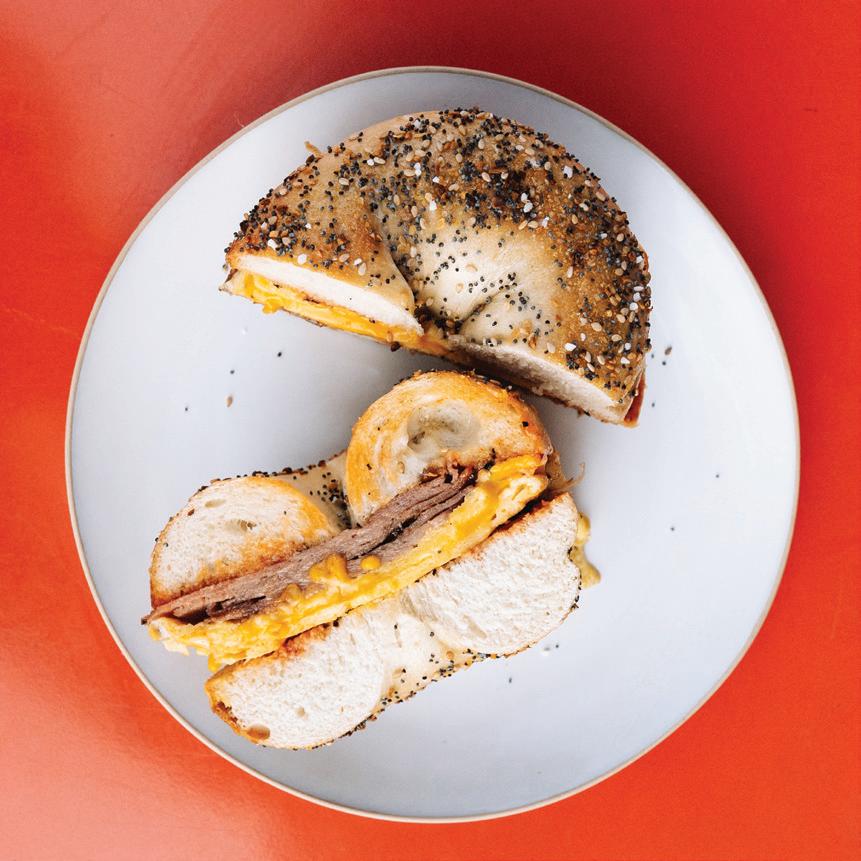Commonwealth Times
BLACK HISTORY MONTH SPECIAL ISSUE



JACK GLAGOLA NEWS EDITOR
Former Governor L. Douglas Wilder is a man of many firsts — first Black Virginia senator, lieutenant governor, governor, first directly elected mayor of Richmond and now a distinguished professor at the VCU school that bears his name. He has spent several decades — he turned 94 years old this year — serving the Commonwealth and his community.
What follows are selected excerpts from The Commonwealth Times’ interview with the former governor.
This transcript has been edited for clarity. The full transcript can be found on commonwealthtimes.org

On his mother, his biggest inspiration
I liked reading, and my mother was very adept at reading and she liked crossword puzzles. She could solve the New York Times crossword puzzle in about a half hour. And she’d be upset if she didn’t get every word. So I got into that, and that’s how it broadened my vocabulary. And I had teachers who would not allow you to not “round” your D’s and speak with your T’s as you should, and so I guess what I was fortunate with was to have people who cared.
I was lucky to be surrounded with people who appreciated education. I’ve always prided my generation with carrying on and not being inventive to the extent that we did anything new. But the people in whose care we were entrusted knew we had a higher responsibility. That’s why I’ve always believed that education is still key to solutions to whatever problems you may have. It’s education.
On leadership
Leadership. I stay with that. Leadership is the key, and leadership is a tautology. It defines itself. What does leadership mean? To lead. And what do you mean to lead? To be in front. What do you mean by that? Be ahead. Today, we suffer from a lack of it. People lamenting, “Oh, Trump is elected again!” He was elected before! We
survived, did we have the best campaigner against him before? And I’m not speaking about Harris — Hillary. What was her message, if you could tell me? “I hung out with Jay-Z last night.” Do you remember when she came up with the commercial? That was supposed to be attracting Black voters. “I hung out with Jay-Z last night.” Who gives a damn! What does that mean to me?
You can’t escape it! They try to come up with some way around it, and then they have to say: “You’re right!” But still don’t stop. Don’t stop trying to find it, because it makes you learn more. Now, that being the case, if you recognize it and get to that point, then I understood early on what it meant. I decided that I was not just interested in a fair slice of the civic pie or the political pie. I wanted my hand to be on the knife that cut the pie.
The finest treatment that I had received in that campaign is from those very people. Because we were being prejudiced. A friend of mine who was from Christiansburg — a senator whose name was Madison Marye — he said, “Doug, I like your idea, and I think it’s great. But when you go out there
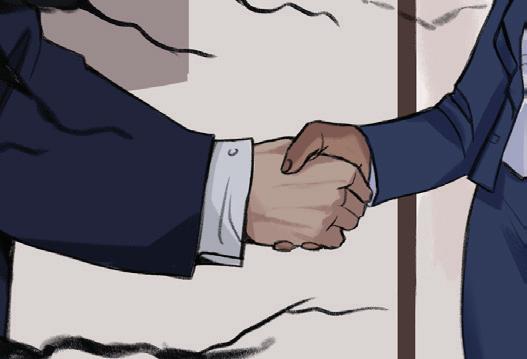
campaigning, you go to a barbershop, you have to go to everyone. And every hand, you got to shake it. Every grocery store, you got to do it. You can’t leave anybody out.”
In going to the church and hearing the extolling of Patrick Henry and “Give me liberty or give me death,” I would say things to my father about it and it would rankle my father because his parents were slaves. He said, “Well, what did Patrick Henry do? Did he go and fight anywhere? Did he join any army? No, he went on up into Ashland and still worked his slaves.”
So when you hear a slave owner speak of liberty and death, it’s a sham to begin with. But I always believed, and I believe now, that the fact that those words were there gave emphasis to what could be.
Well, those things come and go. I’ve always considered it serving the people and doing what I thought could be done within the limitations of human accomplishment, and I found that in this capacity I’m able to share. But see, that’s why a lot of what I’m doing now is trying to advance the causes of historical Black colleges and universities. And I think it’s catching on, it’s doing better. But it’s not where it ought to be.
Continued on next page.
national: President Donald Trump fired the inspector general for the United States Agency of International Development in a move to dismantle the agency.
international: The Sudanese military closed in on the rebel-held capital of Khartoum and announced plans to set up a new government there.
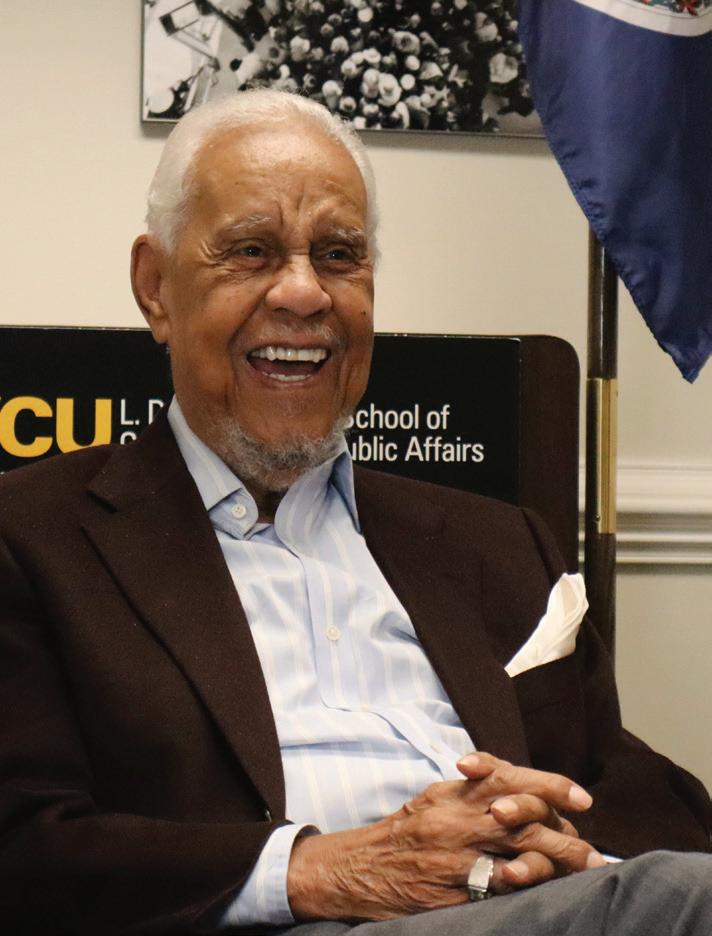
Continued from front page.
On meeting Ronald Reagan
He had been shot. But he told me that he liked horseback riding. He said he was riding one day and he came to a stop, and his horse just right up threw him, and the spot he threw him in was loaded with stones. He said his head landed in the only spot in that area that wasn’t within two or three inches of a stone. He had always said just how lucky he was. I told him in a moment of brashness — I didn’t mean to be that way — I said to him, because of course they had predicted that because Reagan was a movie star, he was a pretender, he didn’t have the qualities of leadership, et cetera. So I said all that. Not in those terms, but I said, “They didn’t have the greatest prognosis for your success, how you’re doing. You were consigned to a position of not being able to lead.” Well, he said, “I could say the same thing about you.”
On Mayor Danny Avula and taxing buildings
I think he’s got a grasp on understanding the money problem. It’s not an issue on race anymore. For instance: The state is occupying so many of the buildings and land that it’s been taken off the tax rolls because if the state owns it, the city can’t tax it. The state now wants the Altria building. You take that off the books, then what do we have? What are you going to tax?
On more Black people being elected
When people ask me, “I want to run for office,” I ask, “How do you know that? What have you tried to do, what have you listened to? What do you want to do?” We have more Black elected officials in this country now than anyone could have imagined. In Virginia, you name it. So many of those problems are being addressed — or are they?
On Richmond’s future
Richmond’s future depends a great deal on the state recognizing that it is the capital. The leadership, again, is going to be that which determines Richmond’s future.
On the most important quality for people to possess
First, determine what you think is most important to you. Without someone else telling you. This is what you need to do. Think: I listen to that, I listen to what you say. Know who you are. You know that quote, “Know thyself, then proceed?” It’s as old as the hills. Very few people take the time to want to really examine themselves.
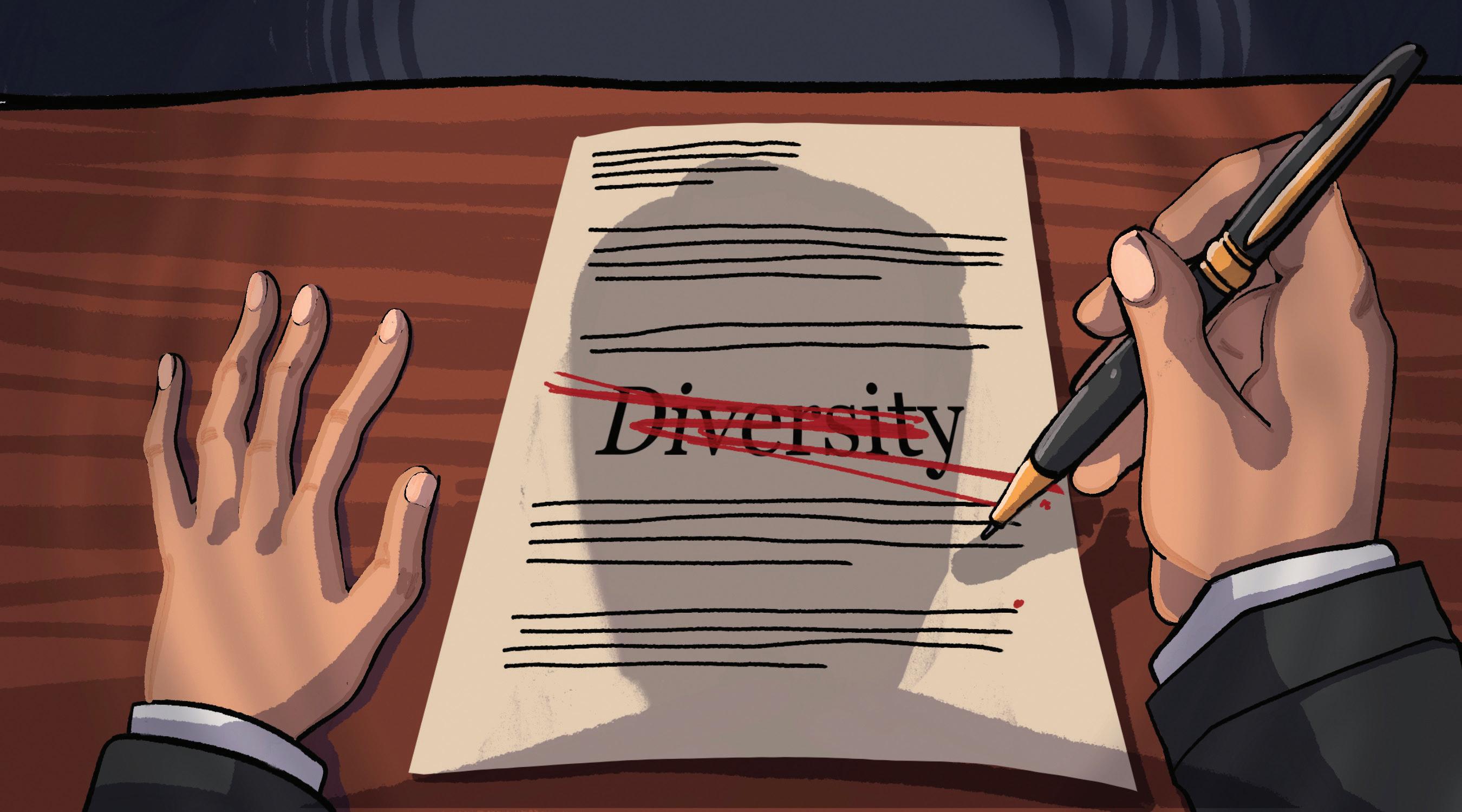
ELLIE WALTMAN COPY EDITOR
President Donald Trump signed an executive order barring diversity, equity and inclusion programs on Jan. 20, putting an end to “radical and wasteful government DEI programs and preferencing,” according to whitehouse.gov.
Federal agencies were quick to comply with Trump’s executive orders. The Defense Intelligence Agency ordered a pause on activities relating to Martin Luther King Jr. Day, Black History Month, Juneteenth and other “special observances,” according to NBC News.
VCU’s Office of the President sent out a statement on Jan. 29 saying they were “monitoring federal executive orders and communications issued by the White House.” VCU released a statement for Black History Month on Feb. 3, according to VCU News.
Abdullah Mohamed, a third-year mechanical engineering student and a political action chair for NAACP at VCU,
stated in a message that VCU’s response to Trump’s orders is not shocking.
“I haven’t seen any official statement,” Mohamed stated. “They did technically post a picture for MLK Day on their story, but they’ve bandwagoned off of others’ posts.”
Haya Malik, a third-year economics student, said she thinks Trump’s orders will harm marginalized communities.
“It keeps white people in power,” Malik said. “They’ll still have that privilege while marginalized communities will still be at the bottom.”
Mikayla Evans, a second-year biology student, said she is unsure what could be done in response to the executive orders.
“I feel like it goes back on a lot that’s been worked on throughout history without any regard to the people that the DEI policies positively affected,” Evans said. “I think it’s crazy that so many executive orders are being passed with no pushback.”
It keeps white people in power. They’ll still have that privilege while marginalized communities will still be at the bottom.”
Haya Malik third-year economics student
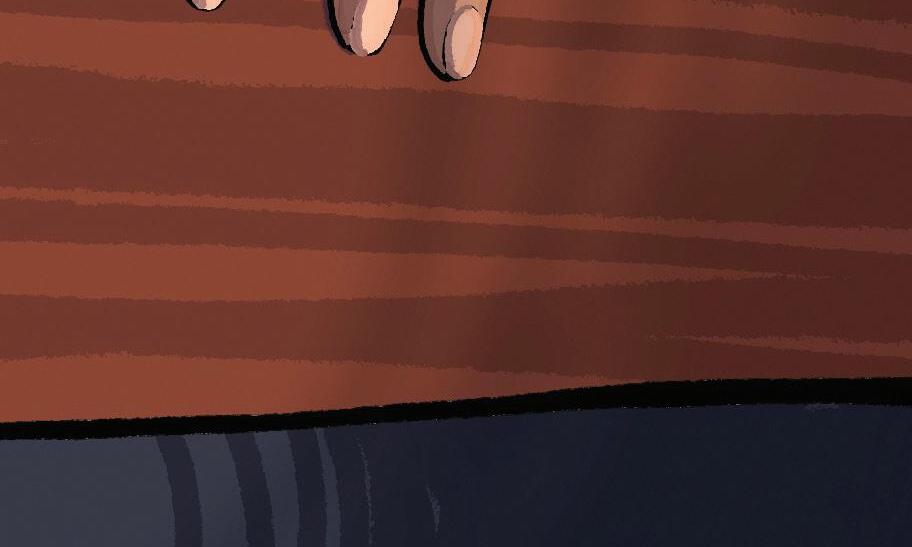
VCU Health became the first public health system to comply with an executive order from President Donald Trump ordering gender-affirming care for people under 19 years old to be discontinued. Photos by Maggie


MOLLY MANNING CONTRIBUTING WRITER
VCU Health and the Children’s Hospital of Richmond at VCU suspended genderaffirming medication and surgical procedures for patients under 19 years old on Jan. 30, according to the Children’s Hospital.
This comes following a memo from Virginia Attorney General Jason Miyares to the VCU and University of Virginia health systems calling for all medical institutions that receive federal grants to end gender-affirming surgeries and medications for children or they risk losing federal funding, according to ABC 8 News.
The memo is in compliance with the executive order on Jan. 28 from President Donald Trump titled “Protecting Children From Chemical and Surgical Mutilation.”
The “chemical and surgical mutilation” in the title is defined as the use of puberty blockers, sex hormones and surgical procedures that attempt to transform an individual’s physical appearance to align with a different identity or that attempt to alter or remove sexual organs, according to the order.
The Children’s Hospital added a genderaffirming care FAQ as of Feb.1, including sections about previously scheduled appointments and other available options. The webpage also lists care options available within gender-affirming care, including medical evaluation, mental health care and educational materials.
The UVA Health Children’s Hospital also posted a similar statement about their suspension of gender-affirming care
for patients under 19 years old on their Transgender Youth Health webpage.
More than 300,000 adolescents in the United States ages 13-17 years old identify as transgender or gender diverse, according to JAMA Pediatrics.
Gender-affirming care can be lifesaving, according to a 2023 study from the American Medical Association that found transgender adults who had access to puberty-delaying medications during adolescence had lower suicidal ideations throughout their lives than those who did not.
Several families and civil rights organizations such as Parents, Families and Friends of Lesbians and Gays, have filed a lawsuit over the executive order, according to the American Civil Liberties Union.
The family of one of the plaintiffs in the case, 17-year-old Willow Chapman, moved to Richmond specifically to seek genderaffirming care for her following a ban in their home state but her appointment was canceled following the executive order, according to ABC 8.
Community members participated in a protest organized by All the Saints Theater Company on Feb. 10. Marchers carried signs, flags and noisemakers bearing statements including “Denying trans care denies trans lives” as they walked down Broad Street to VCU Health.
The “Solidarity Trans Youth March” was meant to show solidarity for those directly impacted by the suspension of transgender healthcare for those under 19 years old.

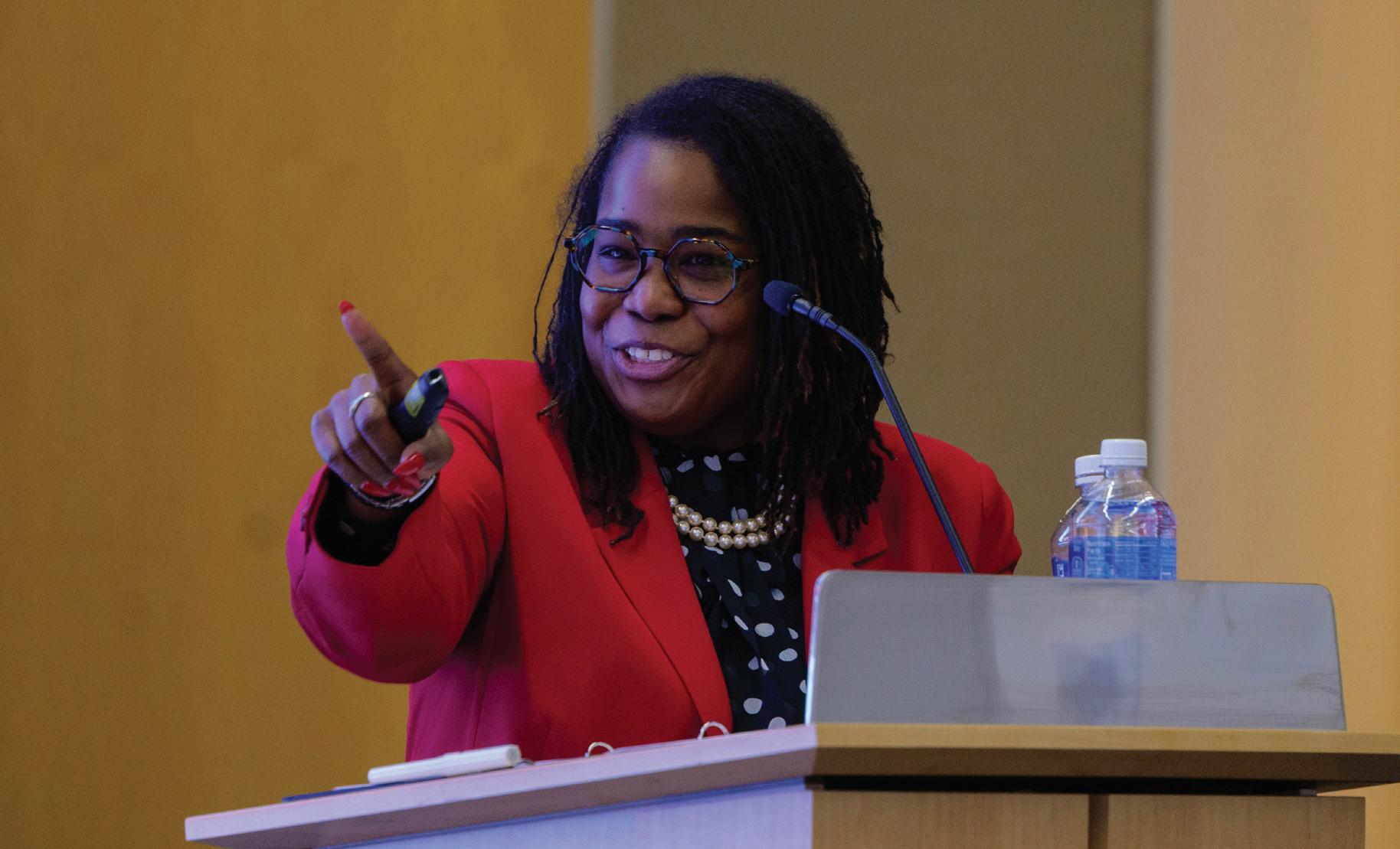
VCU Libraries hosted their annual Black History Month Lecture on Feb. 4 at James Branch Cabell Library featuring Crystal Moten, who holds a doctorate in history and African American studies. She currently works as the curator of collections and exhibitions at the Obama Presidential Center.
The Black History Month lecture series is one of two lectures hosted by VCU Libraries annually and has been a tradition since 2003. The series has drawn speakers such as Pulitzer Prize-winning historian Annette Gordon-Reed and National Book Award winner Ibram X. Kendi, according to the library’s website.
Janet Reid, a business librarian at James Branch Cabell Library and serves as the chair of the library’s event programming committee, said the BHM lectures encompass the university’s mission of “diversity and inclusion” through an “open exchange of ideas.”
“The BHM lectures are an opportunity to introduce, showcase and celebrate the rich contributions of African Americans to the history and culture of the United States of America,” Reid stated in an email.
The Black History Month lecture speaker is chosen through a recommendation by the event programming committee, according
to Reid. The final decision is left to the Dean of Libraries.
“Dr. Moten’s presentation gave VCU and the Richmond Community an overview of the Obama Presidential Center’s mission, museum and programs, with an emphasis on how making change at home is the most meaningful way to participate in democracy and impact the world,” Reid said.
Moten had a career as an educator before pivoting to museum curation at the Smithsonian’s American History Museum. She began work with the Obama Presidential Center in 2022 as the center’s curator.
Moten said the history of the Civil Rights Movement is important in recognizing a long tradition, which is reflected in the messaging at the center.
“We’re calling upon a tradition of organizing and activism,” Moten said. “A tradition that understands the importance of local people to change their own lives. A tradition that is strategic, that understands when more help is needed and who and how to call in that help. And a tradition that understands is not going to happen overnight.”
Moten referenced former President Barack Obama’s speech given at the anniversary of the Selma voting rights
march, in which he stated “I stand on the shoulders of giants.” Moten said these words are a guiding light for the museum in retelling Black history and the legacy of the Obama presidency.
“His words move me as a burgeoning historian because I too understood that I stood on the shoulders of giants, and so those words resonated with me,” Moten said.
Moten said the history of the Selma marches and the work of civil rights activists plays an important role in the messaging at the center; the words “On whose shoulders we stand” speaks to this history.
“Selma, for us at the Obama Presidential Center, holds so many important lessons,” Moten said. “And that’s why it is emblazoned on our museum building.”
Moten said Richmond is relevant to the history of the Civil Rights Movement and the importance of recognizing local grassroots movements. She said Maggie L. Walker’s role in the Civil Rights and suffrage movements is connected to much of what the Center is doing.
“I see her work as extremely important, especially when we think about the importance of local movements, of organizing, of thinking about the specific
context, of the time it takes to change,” Moten said.
The Obama Presidential Center, billed as “a center for global change,” will feature a branch of the Chicago Public Library, as well as gardens and a museum, according to the center’s official website.
Valerie Parker is a Richmond local who attended the lecture. She said she was impressed by the plans for the center, which Moten shared, and said she would “most definitely” be interested in visiting the center once it opens.
“I think it’s an extraordinary build, I’m just in awe of the whole layout,” Parker said.
Julien Piccone, a first-year English student at VCU, attended the lecture as an extra-credit assignment for class. He said he was interested in the concept of the center and would be interested in visiting.
“I think it’s cool they’re making something fun out of the presidency, and I think it’s kind of unique,” Piccone said.
The plans for the center are being overseen by the Obama Foundation, a nonprofit established in 2014 by friends and partners of former President Barack Obama, according to Politico. The center is set to open in 2026, according to the Chicago Tribune.

Stat of the week
VCU graduate student guard Zeb Jackson shot 13 out of 14 from the free throw line in the 73-68 win against the University of Dayton, according to VCU Athletics.
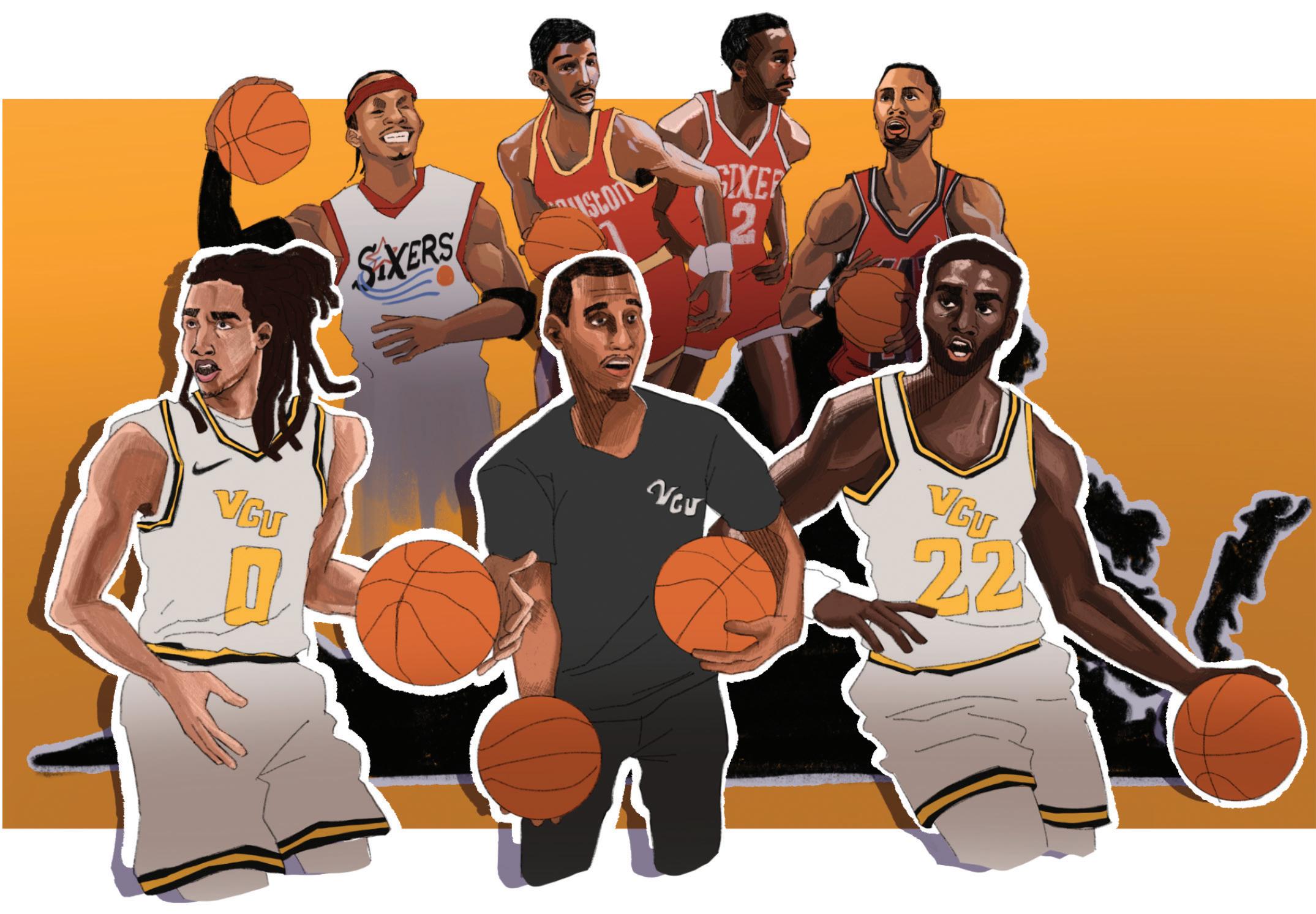
ALEXIS WASHINGTON STAFF WRITER
Virginia is home to some of the greatest NBA legends in history, including Allen Iverson, Alonzo Mourning, Ralph Sampson and Moses Malone.
From legendary NBA icons to upcoming stars, Virginia has consistently produced basketball players who have left a mark on the game.
“I think Virginia is one of the best basketball states,” said VCU assistant coach Darius Theus.
Here is where it all started:
Malone was born in Peter sburg and attended Petersburg High School, where his aggressiveness took him straight from high school to professional basketball in 1974. He was the first modern basketball player to go straight to the league, according to hoophall.
Theus said players from Richmond and Hampton Roads are “straight dogs” who love to compete.
Malone started playing in the American Basketball Association League before he took his talent to the NBA, playing mostly with the Houston Rockets and Philadelphia 76ers.
He averaged 20.6 points and 12.2 rebounds per game as a center, according to ESPN.
He dedicated 19 years to the league, leading the 76ers to the 1983 NBA championship, ranking first in offensive
rebounds and earning the NBA Most Valuable Player award four times, according to the NBA.
Malone was inducted into the Hall of Fame in 2001, according to hoophall.
Sampson is a Harrisonburg native and changed the basketball culture at the University of Virginia. He led UVA to 23 straight wins in 1980 and took his team to the Final Four — its first appearance in school history — while averaging a double-double, according to the UVA library.
Sampson got drafted to the Houston Rockets as a first overall pick in 1983, according to the NBA.
His versatility as a 7-foot-4 center mixed with his speed made him a valuable player. In 1984 he was named Rookie of the Year and is a three-time All Star, according to hoophall.
He averaged 15.4 points and 8.8 rebounds in the NBA.
Sampson was inducted into the Hall of Fame in 2014 and has had his jersey number retired from his alma mater.
Mourning was born in Chesapeake and spent 16 years in the NBA. He played center and was drafted 2nd overall by the Charlotte Hornets in 1992, according to hoophall.
Mourning also played for the New Jersey Nets and the Miami Heat. He averaged 17.1
points, 8.5 rebounds and 2.8 blocks per game, according to the NBA.
He briefly retired in 2000 after suffering from a rare kidney disease. With the help of his wife, he raised more than $2 million for treatment for those dealing with the same disease, according to the Mourning Family Foundation.
However, he did not stop there. In 2006, Mourning came back to the court and won an NBA championship with the Heat — their first in franchise history, according to Basketball Network.
Another 757 product is Iverson, a point guard from Hampton. He was drafted by the 76ers in 1996 where he played for most of his career, according to the NBA.
He averaged 26.7 points, 3.7 rebounds and 6.2 assists per game, according to the NBA.
The 76ers honored Iverson with a statue located in front of the training complex. He won NBA Rookie of the Year in 1997 and Most Valuable Player in 2001, according to ESPN.
VCU first-year guard Brandon Jennings said he admires Iverson on and off the court.
“AI just has a lot of swag to him,” Jennings said.
Theus learned his game from watching and studying his peers, but said Iverson is one person he wanted to be like. He played ball at Norcom High School in Portsmouth and at VCU.
“Everybody wanted that AI crossover,” Theus said.
The impact of Virginia basketball greats continues to shape the next generation of players. There are nine players from Virginia that are currently in the league, according to basketball reference.
Most college athletes begin their professional careers through the Amateur Athletic Union or prep schools.
Jennings is from Richmond and played in the AAU at Ben Wallace’s gym in Henrico County. He said he had personal conversations with Wallace which helped him as a player.
Wallace is a former Detroit Pistons forward and played college basketball at Virginia Union University. Wallace wasn’t afraid to get in the paint, winning Defensive Player of the Year four times, tied for the most all-time with Dikembe Mutombo, according to hoophall.
He made two NBA finals appearances and won one with the Pistons in 2004, according to hoophall.
VCU graduate student guard Joe Bamisile said there is talent within AAU teams in Virginia.
Jennings and Bamisile represent the future of Black basketball history in Virginia. Jennings said he hopes his VCU legacy is defined by being both a good athlete and teammate, while Bamisile, grounded in his faith, said he aims to keep having fun playing the game.
Theus said he has a message for Black youth aspiring to play or coach in the league:
“Believe in yourself number one, you are going to hear some no’s and that’s okay,” Theus said. “Never give up.”
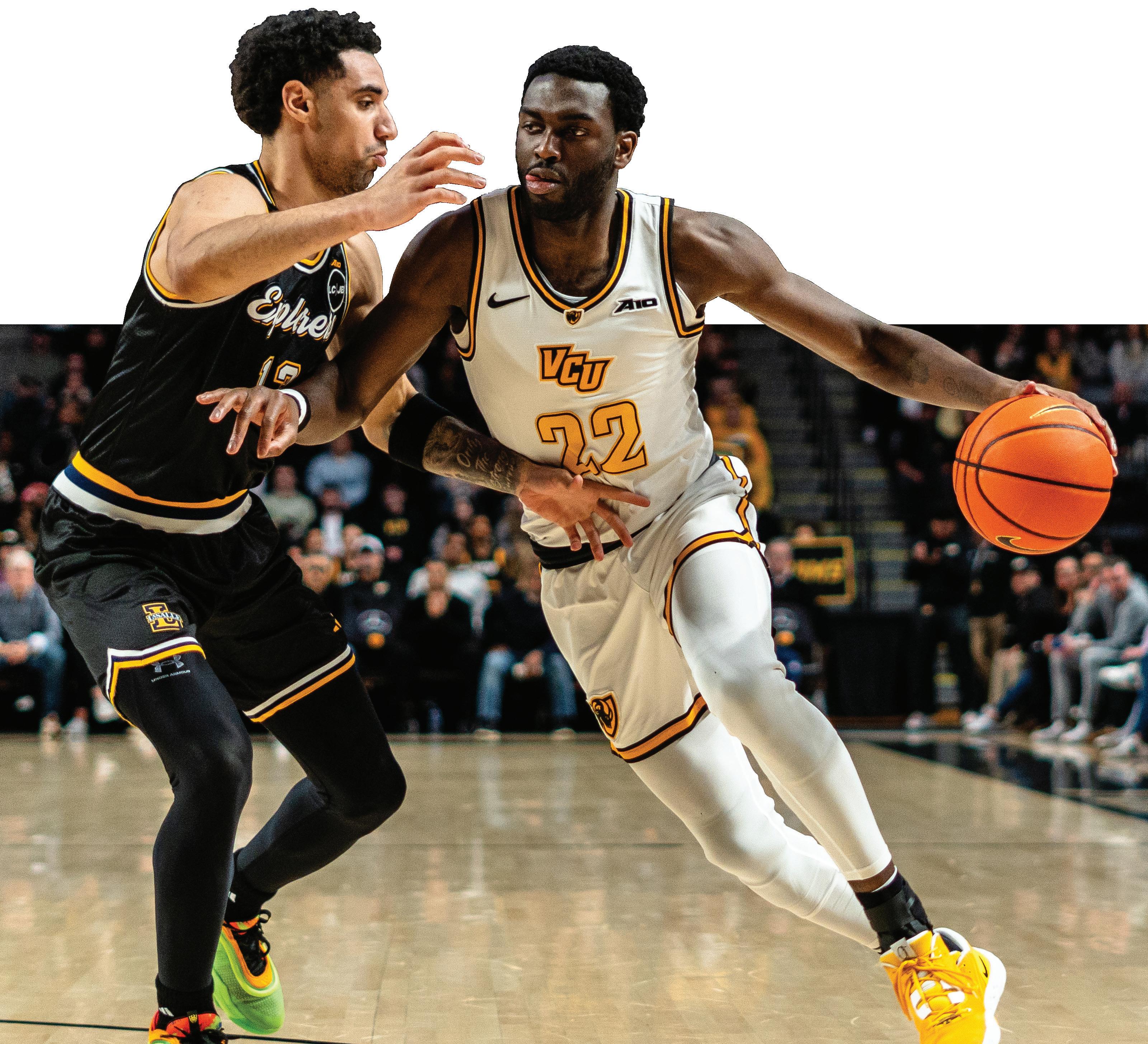


ANDREW MCGHAN
STAFF WRITER
DREW THOMPSON STAFF WRITER
VCU men’s basketball blew out La Salle University 96-66 on Feb. 4.
The game is a bit more personal for VCU graduate student forward Jack Clark because he spent four years playing for the Explorers, according to VCU Athletics. Clark played at La Salle from 2018 to 2022. Clark said he thought it was great to see some familiar faces that he played with still on the team.
“It was fun to see a couple coaches and a couple players I played with,” Clark said. But when the first whistle sounded, it was all business between the two teams.
In the opening two minutes of the first half, VCU went on a 8-0 run after being down by three, according to StatBroadcast.
VCU grabbed 10 rebounds with six of them coming from the offensive end compared to La Salle’s two total rebounds in the 11-minute mark, according to
StatBroadcast.
The Rams went on a 10-0 run making the score 26-16 with VCU leading at the nine-minute mark of the first half, according to StatBroadcast.
VCU graduate student guard Phillip Russell and first-year guard Brandon Jennings scored three straight threepointers, according to StatBroadcast.
La Salle was shooting six of 15 from the field by the eight-minute mark, according to StatBroadcast.
VCU shot 47% from the three-point arch by the three-minute mark in the first half, according to StatBroadcast.
At halftime, the Rams led the Explorers with a score of 48-28. La Salle had only made one three-pointer compared to VCU’s nine three-pointers made, according to StatBroadcast.
VCU had 25 total rebounds at halftime while La Salle had 11 total rebounds, according to StatBroadcast. VCU graduate student Joe Bamisile led the Rams in scoring with 12 points.
La Salle came out of halftime firing off a three from first-year guard Deuce Jones before VCU graduate student
guard Max Shulga answered back with a three of his own.
Jones then committed a flagrant two foul on VCU’s Russell, ejecting Jones from the game.
VCU continued to apply pressure on offense highlighted by an aggressive drive from graduate student guard Zeb Jackson who converted on the and-one.
VCU went on a 19-0 run over the span of five minutes. The explosion on offense translated to the defense, as La Salle went on a concurrent five-minute scoring drought, according to StatBroadcast.
Rams first-year guard Terrence Hill Jr. made a big impact off the bench in the second half, hitting a trifecta of threes on consecutive possessions.
VCU’s efficient shooting coupled with their aggression on the boards contributed to the emphatic win, according to StatBroadcast. The Rams shot 52% from the field and 44% from three.
The Rams ended the game just four points off from 100, winning 96-66. Bamisile led the Rams in scoring with 17, with Shulga and Hill not sitting too far behind at 14 and 13 respectively.
VCU grabbed 45 rebounds with 19 of them being on the offensive end, according to StatBroadcast. VCU third-year forward Christian Fermin led the team with eight rebounds and set a new career high in blocks with five.
Fermin said he came into Tuesday’s match up with full confidence to protect the rim and to rebound missed shots because that is what his team needs him to do.
“I normally expect to protect the rim and tonight it just happened that the balls were coming my way, and I was hitting them,” Fermin said. “That’s what my team needed me to do at the moment; that’s all I did.”
VCU will play their next game against George Washington University at the Charles E. Smith Center on Feb. 12 at 7 p.m.
FEBRUARY 4
MEN’S BASKETBALL VS LA SALLE WON 9 6-66
FEBRUARY 5
WOMEN’S BASKETBALL AT GEORGE MASON LOSS 66- 44
FEBRUARY 7
MEN’S BASKETBALL AT DAYTON WON 73 -68
FEBRUARY 8
WOMEN’S TENNIS VS EAST CAROLINA WON 4 -3
LACROSSE VS VIRGINIA TECH LOSS 15 -7
FEBRUARY 9
MEN’S TENNIS VS RICHMOND WON 7- 0
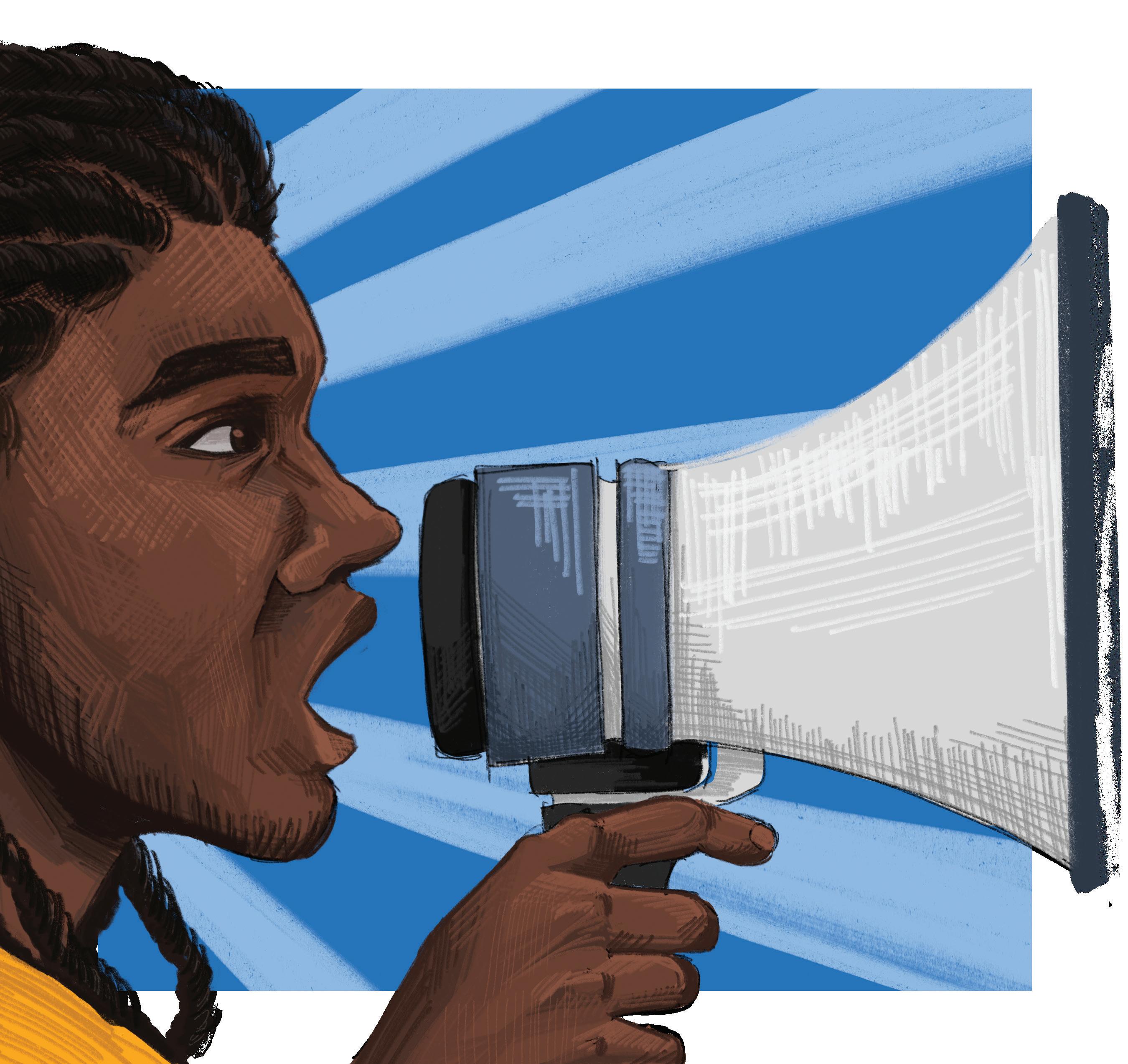
From Air Jordans to the high-five, Black athletes have driven popular culture for decades. The mannerisms, clothes and overall presence of Black athletes are often duplicated but not replicated.
In today’s climate, with politicians and certain media members trying to erase the contributions of Black people as a whole, attacks on Diversity, Equity and Inclusion initiatives, Black history in schools and dismissal of prominent Black voices, the Black athlete’s cultural impact establishes another stronghold in popular culture that cannot be erased with executive orders.
Growing up, I saw how former NBA player Carmelo Anthony wore his headband and his Jordan player-exclusive colorways on his way to scoring a quick 30 points.
Now, I look at Ravens quarterback Lamar Jackson with a twist-out, grills in his mouth, all while stiff-arming defenders to throw the ball to tight end Isaiah Likely, who dons Deion Sanders’ cleats for a clutch touchdown, and I am amazed.
Seeing those guys play true to themselves is a blessing, and the groundwork has been laid by many men and women before them.
I wanted to be like the men and women I saw on my TV screen. Names such as National Football League hall of fame safety Ed Reed, tennis legend Serena Williams, golfer Tiger Woods and Lakers forward LeBron James are so integral to my childhood.
Seeing Woods and Williams dominate sports — where I didn’t see people who looked like me — gave me the confidence to go out into the world as a Black child with the understanding that if I am good
enough, I could never be denied.
The Black experience in this country has always been political ever since the first enslaved African people were brought to Virginia in 1619.
Slavery, Black codes, Jim Crow laws and the constant degradation of my people have made us seem like outsiders in our own country. Nonetheless, we persevere and break the barriers that were set for us.
Major League Baseball legend Jackie Robinson, multi-sport athlete Bobby Marshall, NFL hall of fame scout Bill Nunn and former first baseman Buck O’Neil were cornerstones in breaking down racial lines that were set, in terms of players, coaches and staff. Their contributions and sacrifices allow for the presence of Black athletes, coaches and support staff that influence the product we see today.
The fight still goes on, problems of wealth disparities, police brutality and lack of opportunities still affect our communities to this day.
Black athletes have used their platform to speak on and highlight those issues. Former NFL quarterback Colin Kaepernick’s kneeling during the National Anthem for police brutality and overall injustice in this country resembles former United States track & field athletes John Carlos and Tommie Smith raising their fists during the National Anthem at the Olympics in 1968, at the height of the Civil Rights Movement. The message has always needed a platform, and Black athletes can achieve that.
Players in the WNBA actively fight for the justice of people of color, women and members of the LGBTQ+ community, due to many of the athletes falling into multiple
intersecting identities. Their calls for action are usually the loudest because they are speaking for the most marginalized, and the Black women who back that movement have made lasting impacts on social justice.
WNBA hall of fame guard Maya Moore used her platform for prison reform and highlighting the injustices within the court system for Black people.
Dallas Wings guard DiJonai Carrington directly called for the other players in the WNBA as well as the league to protect causes for marginalized people, after the first wave of executive orders by President Donald Trump are just a few of the many current and former players fighting for justice in the WNBA.
The influence of Black athletes on our culture cannot be understated. It’s both the big and small things.
It’s Allen Iverson getting his mom to braid his hair on the bench of an NBA game and Doug Williams being the first Black quarterback to win a Super Bowl.
It’s me getting my mom to buy my first pair of LeBron’s in fourth grade because it was on the NBA 2K game cover, and then watching LeBron build a school for at-risk youth in his hometown.
It’s seeing little Black girls starting gymnastics because Simone Biles is the greatest of all time, and they want to be just like her.
Black athletes are examples of hope, pride, resilience and power for our community. Their successes should be celebrated, their triumphs remembered and their presence admired. That will never be taken away, no matter how many times white supremacy tries to erase our accomplishments, our perseverance will always be the reason that they fail.

DAN ELSON CONTRIBUTING WRITER
Former VCU pitcher and pitching coach Sean Thompson became the head coach of the Rams on July 22, 2024.
Thompson said he has always had “aspirations” to become a head coach.
“It’s been a dream come true — and every other adjective I can think of — but I’m extremely fortunate for the opportunity,” Thompson said. “I’ve had a blast doing it so far, and get to work with a great group of guys every single day.”
Thompson pitched for the Rams from 2015-2018. He had a career 3.30 ERA and finished 27-9 in his four seasons according to VCU Athletics.
“I’ve obviously always loved VCU, being an alum, playing in this program, coaching in this program,” Thompson said. “So I think that’s kind of where it starts out for four years. You know, you love where you’re at, and I loved where I was at here at VCU. I love the expectation of being in this program.”
The expectation for the Rams is to win a championship, according to Thompson.
“I told the guys that day one, whenever I got the opportunity to lead this program, was that we were going to win another championship,” Thompson said. “We won one last year and I think when you’re coming off winning one, the expectation is that.”
Thompson replaced former head coach Bradley LeCroy, who is now the head coach at Liberty University. “As an assistant, I think you’re always
watching how people do things,” Thompson said. “And from my perspective, I’ve always tried to be a sponge — back to when I was a player and as an assistant coach — and I think you always can constantly put yourself in the situation.”
I’ve obviously always loved VCU, being an alum, playing in this program, coaching in this program,” Thompson said. “So I think that’s kind of where it starts out for four years. You know, you love where you’re at, and I loved where I was at here at VCU. I love the expectation of being in this program.”
Sean
Thompson,
head coach of VCU baseball
Thompson said his long term goal is to continue to “grow this program.”
“I want to push the limits, to see how far the program can go and continue to chase new boundaries for us,” Thompson said.
Thompson said it’s an easier adjustment
to become the head coach because of his history with VCU.
“You have some familiarity with the roster and obviously getting to coach those guys and be around that group last year.” Thompson said. “It creates some comfort immediately.”
Thompson said the standards for the Rams are accountability and discipline.
“I think that just tries to be the consistent message every single day,” Thompson said. “You can’t win a championship in January.”
Campbell Ellis, a graduate assistant at VCU, said Thompson brings a leadership style that focuses on player development and a winning culture.
I told the guys that day one, whenever I got the opportunity to lead this program, was that we were going to win another championship.”
Sean Thompson, head coach of VCU baseball
“He’s really committed on developing players and giving players a process to follow that equals success,” Ellis said.
Athletics.
He’s really committed on developing players and giving players a process to follow that equals success.”
Campbell Ellis, graduate assistant at VCU
Ellis said the players are “bought in” to Thompson’s coaching.
“The guys are getting more connected and close with each other,” Ellis said. “I think he just brings a leadership style that brings everyone together and everyone wants to get better together.”
VCU fourth-year pitcher Cade Dressler said it’s a “great thing” to have a younger coach.
“He’s somebody who has been around VCU for so long, graduated within the last eight years, played professional baseball and has come back. He can connect with us extremely well,” Dressler said. “He gets today’s new game of baseball.”
BRAXTON HARE
SPECTRUM EDITOR
On This Day
Feb. 12, 1909, the National Association for the Advancement of Colored People was founded.

Richmond is ranked among the top 10 cities in the United States with the highest percentage of Black-owned businesses for the third consecutive year, according to a new analysis from LendingTree.
These businesses span multiple industries, including food, wellness, retail and the arts, each contributing to the city’s economy and cultural identity.
Mama J’s Kitchen - Located in the Jackson Ward neighborhood, Mama J’s Kitchen is a well-known restaurant serving classic Southern comfort food. This family-owned establishment is recognized for its welcoming atmosphere and commitment to quality. Guests can indulge in a diverse selection of à la carte classic dishes, including crispy fried chicken, tender fried catfish, flavorful blue crab cakes and an array of complementary sides such as macaroni and cheese, sweet candied yams and seasoned collard greens, according to their website.
Hour Cycle Studio - A Black-woman-owned indoor cycling studio that emphasizes inclusivity and empowerment, Hour Cycle Studio studio offers highenergy cycling classes designed for all fitness levels. Centered around the Black experience, the studio celebrates Black music, art, language and culture through its workouts. The space fosters an inspiring and energizing atmosphere where individuals of all body types, skin tones and fitness levels come together for high-intensity cardio workouts, according to their website.
Verify Sounds Recording Studio - A recording studio dedicated to empowering artists and amplifying diverse voices in the music industry. The studio provides high-quality production services, offering a professional space where musicians, podcasters and creatives can bring their visions to life. Verify Sounds serves as a cultural hub, hosting workshops, artist showcases and networking events to support the growth of Richmond’s Black music community. They aim to ensure that the recording studio you’re familiar with provides the most comfortable experience you’ve ever invested in, according to their website.
JewFro - A unique restaurant that combines elements of Jewish and African cuisine, JewFro offers a fusion of flavors not commonly found in Richmond. The menu showcases dishes inspired by culinary traditions, bringing together spices, ingredients and cooking techniques from different cultures. JewFro provides a distinct dining experience that highlights the intersection of these diverse food histories, according to their website.
Taylor’s Barbershop - A trusted grooming destination in Richmond for years, Taylor’s Barbershop is known for its skilled barbers and professional services. The shop provides high-quality haircuts, beard grooming and styling in a welcoming environment. Taylor’s has built a reputation as a reliable and community-oriented business where customers can expect top-tier service and attention to detail. The business is built on the idea of offering more than just a haircut, providing excellent service and a lively atmosphere that blends both classic and modern styles, according to their website.
Hippodrome Theater - A historic entertainment venue that has been a cultural landmark since the early 20th century, the Hippodrome Theater was originally a movie theater and vaudeville house. The Hippodrome now hosts live performances, private events and celebrations highlighting Richmond’s artistic and musical heritage. The venue continues to play a role in the city’s cultural scene by providing a space for artists, musicians and community gatherings, according to their website.
Brainstorm Brewhouse – A vibrant brewery and café located in Richmond, Virginia, Brainstorm Brewhouse offers a unique blend of craft beer and creative community experiences. The brewhouse features a rotating selection of locally brewed beers, alongside a carefully curated menu of delicious food options. Beyond serving exceptional brews, Brainstorm Brewhouse is a cultural hub, hosting live music, art events and community gatherings. The founders are selfproclaimed “Beer Nerds” whose mission is to provide beer, community and vibes, according to their Instagram.
The Well Collective - A wellness center that offers yoga, meditation and holistic health services, The Well Collective is designed to promote self-care and mental well-being through workshops, guided sessions and community-focused events. With an emphasis on mindfulness and relaxation, the space provides a supportive environment for individuals looking to improve their physical and mental health. Their mission is to cultivate leadership, support healing and unite people in building a future centered on equity and transformation, according to their website.
Ruby Scoops Ice Cream & Sweets - A locally owned ice cream shop specializing in small-batch, handcrafted flavors, Ruby Scoops Ice Cream & Sweets is known for its creative combinations and commitment
to high-quality ingredients. Ruby Scoops Ice Cream & Sweets offers a range of unique flavors that cater to different tastes. The shop provides a friendly space for customers to enjoy artisanal ice cream while supporting a local business. Every product, from small-batch ice creams, sorbets and sherbets to desserts, is meticulously handcrafted from scratch by chef and owner Rabia Kamara and the Scoops Squad, according to their website.
Shakoor’s Merchandise - A retail store that offers culturally inspired clothing, accessories and home decor, Shakoor’s Merchandise features designs that celebrate African heritage and local artistry, providing customers with unique and meaningful products. Shakoor’s Merchandise serves as both a shopping destination and a platform for cultural expression. The shop has thrived in offering ethnic and cultural garments, as well as artifacts sourced from across the globe, according to their website.
Greenbriar Cafe and Coffeehouse - A cafe that blends quality coffee with community engagement. With a carefully crafted selection of ethically sourced coffee and specialty drinks, Greenbriar Cafe and Coffeehouse creates a welcoming space where people can gather, connect and support Black entrepreneurship. The cafe also hosts open mic nights, book readings and cultural events, making it more than just a coffee shop, according to their Instagram.
Hair Care Products - This business specializes in handcrafted, natural hair and skincare products made with organic ingredients. The brand focuses on creating products that cater to different hair and skin types, offering a range of items designed to promote natural beauty. With an emphasis on using plant-based ingredients, Adiva Naturals provides an alternative to conventional beauty products. The brand strives to inform the community about the dangers of harmful ingredients while offering healthier alternatives for hair and skin care products, according to their website.
These businesses represent a wide range of industries and contribute to Richmond’s economic and cultural landscape. They provide unique products, services and experiences that cater to both locals and visitors, offering opportunities to engage with and support the city’s Black entrepreneurial community.
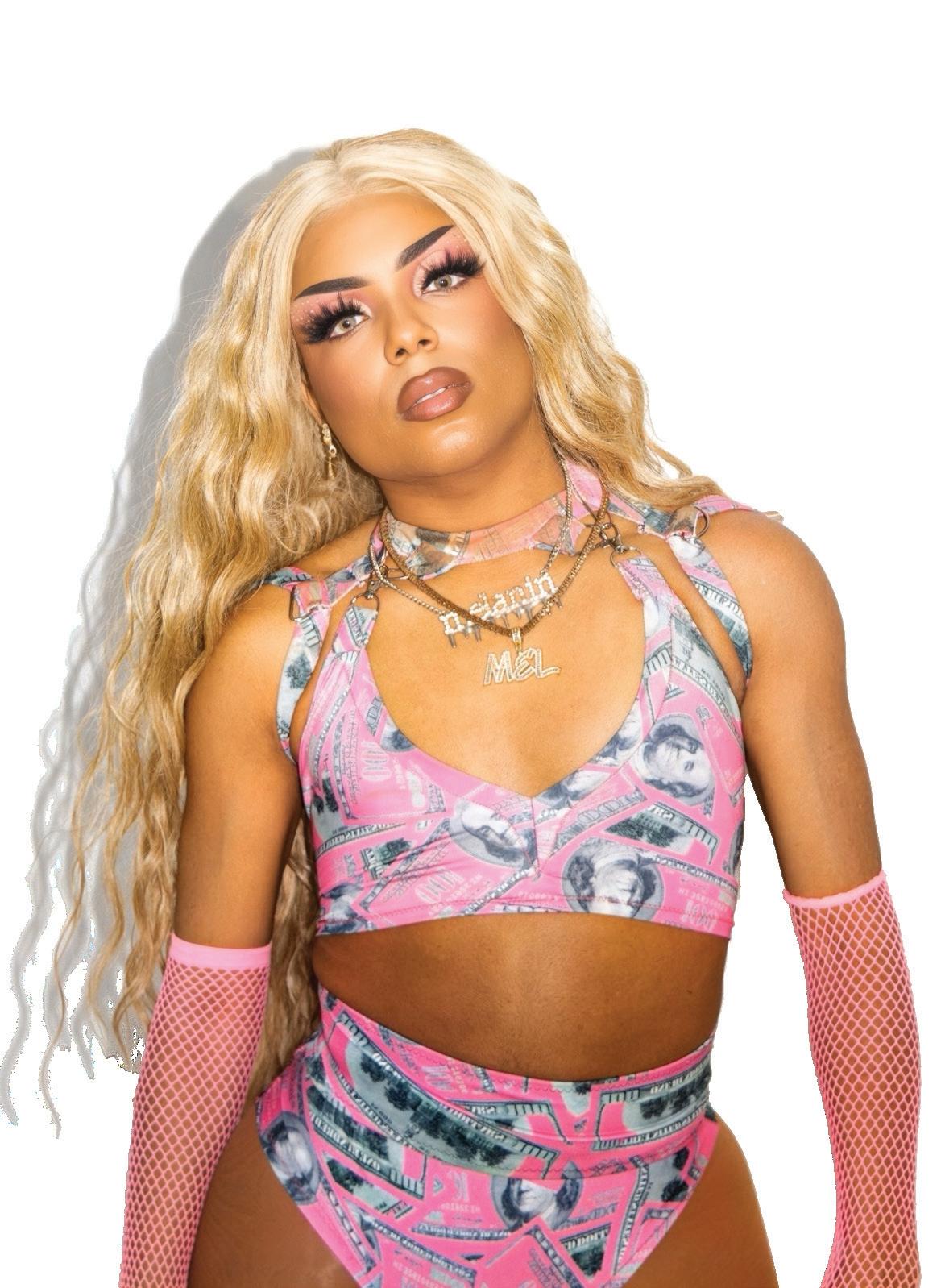
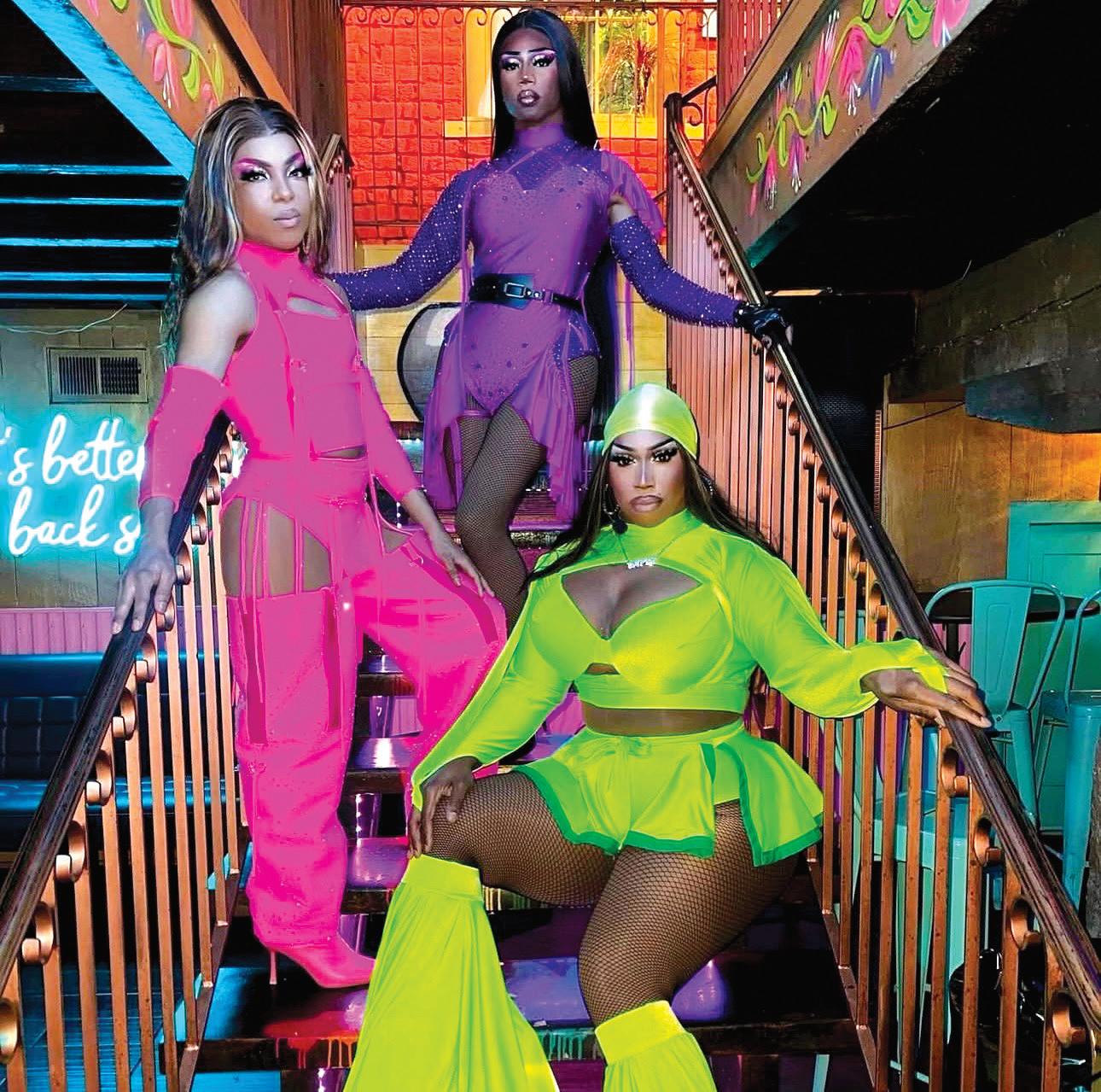
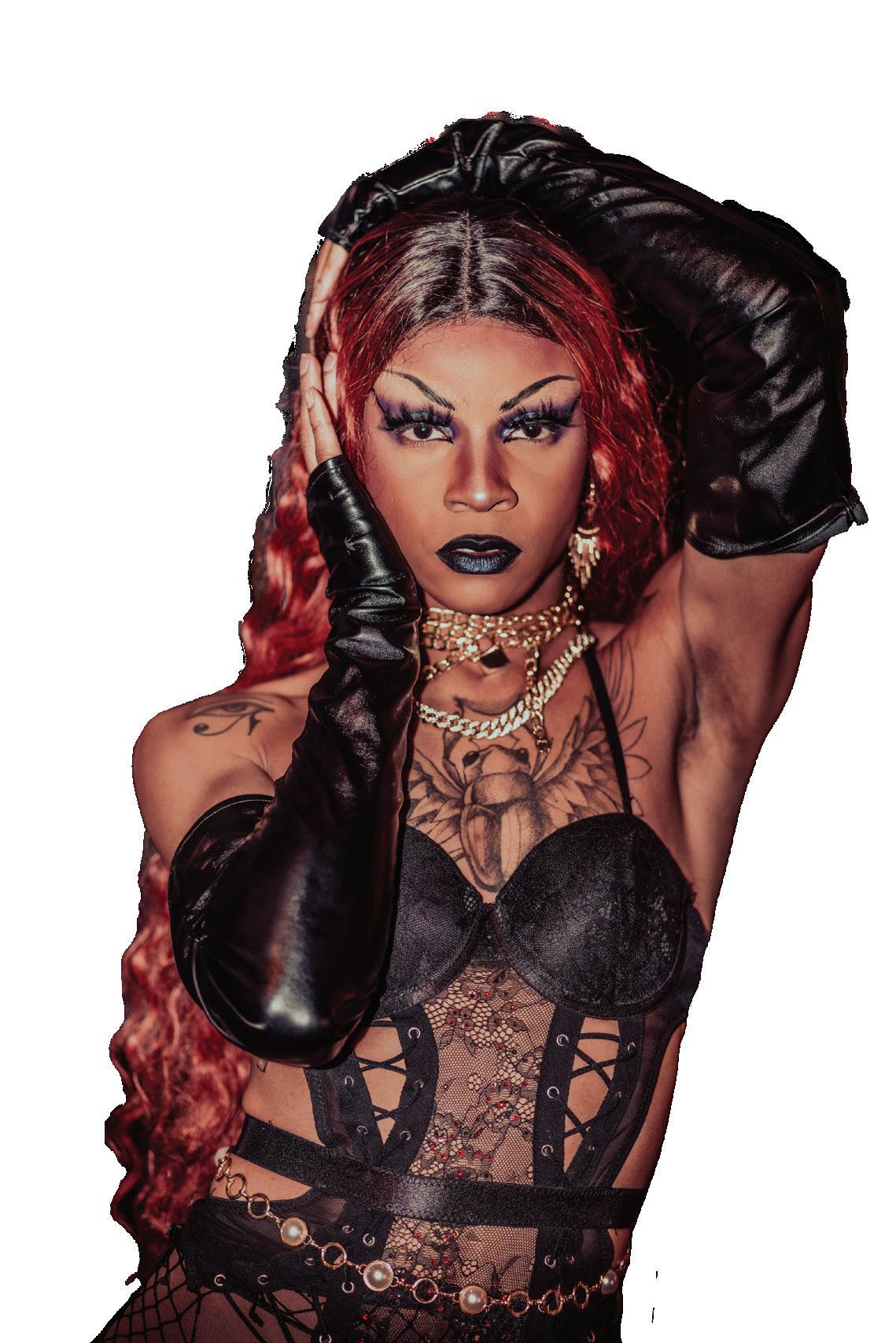
‘Beyond
Richmond’s Black drag queens ‘serve’ and inspire the community
LELIA CONTEE
CONTRIBUTING WRITER
Richmond’s drag scene includes bars, nightclubs and drag shows that foster diverse and inclusive spaces allowing queer people to feel safe and comfortable, according to Adrienne Londono, the owner of Papi’s, a nightclub in Shockoe Slip. Popular places like Papi’s, Godfrey’s RVA and SAD Brunch, an entertainment company, provide opportunities for drag queens to perform and queer people to connect with their community.
However, for many, the uniqueness that comes with being a Black drag queen means shaping drag culture while being one of the most underrepresented, according to Amber St. Lexington, a drag performer and self-proclaimed Richmond’s No.1 dancing diva.
“We do get slept on so many times, mainstream and locally,” Lexington said. “It’s quite crazy to watch, but the girls that are doing it, we are doing it and we’re trying to break the barriers, but it’s still really hard.”
Lexington said she has performed for almost 10 years, starting in Richmond doing amateur competitions. She described her drag style as “club girl,” gaining inspiration from pop stars like Beyoncé and Megan Thee Stallion.
“I like to incorporate the big girls as much as I can into my career because that’s one thing I want to be celebrated for,” Lexington said. “Always being thick and juicy and big and super tall, but never let that slow me down.”
Artemis Lazuli, an alternative drag queen, has been doing drag for six years. She said she drew inspiration from things like fantasy and villains and was a metalhead.
Even though Black people have had to work four times as hard to get half of the recognition, they have existed in
almost every single sphere of influence and in almost every single environment of creativity, according to Lazuli.
For Lazuli, Black drag representation means creating an environment for the “weirdos,” the “monsters” and people who are not always accepted and loved, she said.
“There is not a single place that we can exclude Black people when it comes down to creative inspiration,” Lazuli said. “If you are an alt, spooky person, live in that, thrive in that. If you love pageants, live in that, thrive in that. If you love anime and video games and blogs and poetry, whatever it is, you belong.”
“We wouldn’t have drag the way we have drag if it wasn’t for the entertainers of color and Black trans women.”
Jasmen C. ClitO'patra drag queen
Melanin Monroe, a drag performer and VCU alum, said that part of being a Black drag queen is giving back to the community.
Monroe said using her performances and talent to give back is key. She hosts amateur shows for new performers, allowing them to be seen, earn money, win prizes and secure bookings.
She also plans to fundraise for Seven Hills Family Medicine so locals have access to affordable healthcare as it serves as a “light in the community,” she said.
“Those are always the most fun shows to do,” Monroe said. “Using my body for
charity? Absolutely. I would love to come and jump off of a table at your venue, please. Where are we? Where are we putting the money at? Where’s the check going? Let me know how I can help.”
Alvion Arnell Davenport, entertainment director at Godfrey’s RVA and Miss Continental Plus, said she focuses on how to “reach beyond the stage” through philanthropy work and uplifting the future of drag entertainment.
“I do things like raise money for HIV and AIDS awareness, participate in the George Floyd protests while raising over $15,000 to take care of protesters that day,” Davenport said. “I am a proud member now for the 50th year of the Virginia Pride Board.”
The philanthropy aspect of their focus comes from seeing the struggles and hardships of the community, Davenport said. With that upbringing of community and family, Black people play a huge role in pouring into the gay community and in drag circles to instill teachings of responsibility, growth and success onto their drag children and families, according to Davenport.
Jasmen C. ClitO’patra, a drag performer for nearly 10 years, said that Black drag culture has a rich history of Black entertainers that continue to defy the odds and influence the queer community.
ClitO’patra believes older generations of drag queens, made up of Black trans women and Black men, were inspirational and admirable to see in positions of power and being in communities.
“We wouldn’t have drag the way we have drag if it wasn’t for the entertainers of color and Black trans women,” ClitO’patra said.
Not only is drag a protest, but it is a tool for them to use their voice as they feel
completely seen and listened to, especially for little Black children coming up in this society, according to ClitO’patra.
ClitO’patra said they show up for the community by being authentically themselves in hopes that it allows people to feel safe and comfortable to also be themselves.
“I love Richmond and I love drag, but what makes me fall in love with it even more is linking up and being able to see people that reflect me in my lifestyle doing great and doing things I’ve always

DAIJAH HINMON
CONTRIBUTING
WRITER
Black Art Student Empowerment is an active community geared toward the empowerment of underrepresented artists and their supporters at Virginia Commonwealth University, according to the VCU Department of African American Studies Student Organization sheet.

“So many creative movements like fashion, food and music have been started by Black people,” Lindsey said. “There’s so many things we would not have without the creative creations of Black people.”
In our society, it is important that people not only see themselves in a body of work, but also see other new perspectives, according to Samantha Jenkins, social media chair for BASE and fourth-year communication arts student.
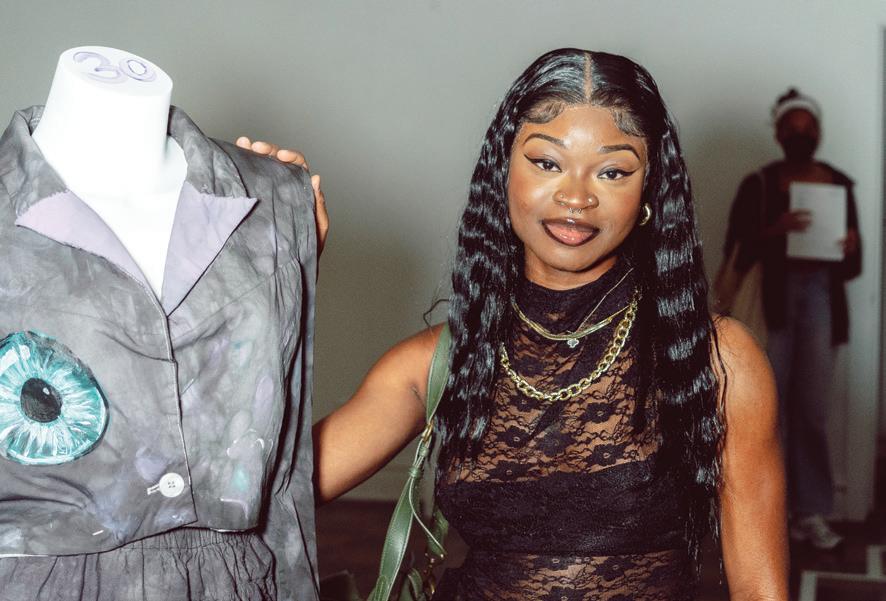
The events held by BASE incorporate networking and professional skills, while also including culture talks based on what is happening in the Black community, according to Mikayla Lindsey, student advisor of BASE and fourth-year communication arts student.
The organization has a good mix between chill and professional events, Lindsey said. It motivates everyone interested in finding their place in the organization.
It is important to highlight Black artists, Lindsey said.
“It’s good to build with people that you would not even anticipate because honestly we all are the same, but sometimes we need more reminders that we are,” Jenkins said.
Since BASE is open to a variety of interests, it makes collaborating with other organizations fun, Jenkins said.
“We’re all on the same team,” Jenkins said. “Not just Black students, but students in general. There’s space for everybody.”
Art is not just one skill, but a plethora that everyone should have the opportunity to share and express, according to Faith Brown, vice president of BASE and fourthyear information systems student.
“We are open and accepting of all forms of art,” Brown said. “Whether that be film, dancing, painting, drawing or singing.”
Through BASE, collaborating with people in different mediums introduced new learning opportunities in other mediums, according to Chynia Harris,

programming chair of BASE and fourthyear dance and choreography student.
“I think fostering collaboration especially as a Black artist early on is important before we go out into the field,” Harris said.
“So
many creative movements like fashion, food and music have been started by Black people. There's so many things we would not have without the creative creations of Black people.”
Mikayla Lindsey student advisor of BASE
As a dance student, Harris said working with cinematographers and videographers allowed her to get comfortable in spaces that will be important to her in the future.
Yeala Grimes, president of BASE and fourth-year communication arts student, said that when faced with challenges, working in BASE has taught her important lessons about teamwork and adapting when things go wrong.
BASE is celebrating its 10-year anniversary this spring, Grimes said. This has allowed for alumni to pass down lessons and use them to better the organization.
“It’s something that gets greater with every iteration because we just have so much knowledge to fall back on,” Grimes said.
People should have an outlet to express themselves without any pressure, according to Grimes. Having the resources available to be artistic freely is an important part of BASE events.
According to Laila Hendricks, another social media chair of BASE and fourth-year graphic design student, the organization works with the administration to provide artists support when experiencing discrimination in the arts.
“Our main goal is to support and empower artists,” Hendricks said. “We provide opportunities like market events where they can sell their products if they’re running a small business or even just want to get their art out there for people to see.”
BASE represents all different art mediums, and bringing them all together creates more opportunities for others to gain inspiration and show that there are more ways of being creative, according to Hendricks.
Hendricks said they feel that Black artists are not represented enough in art schools, so it was important to create a space outside the classroom that makes people feel like they belong.
“We created this organization for students of color who need the space to exist, explore and grow,” Hendricks said.
Advocating for other students and organizations helps to uplift everyone and build a bigger platform for more people to join, according to Hendricks.
“It gave me a voice to just express my art out in the world,” Hendricks said.
BASE has allowed people who are not Black to notice what Black people have been doing for the community at VCU, according to Hendricks.
“We exist in these spaces that no one thought we could be in,” Hendricks said.
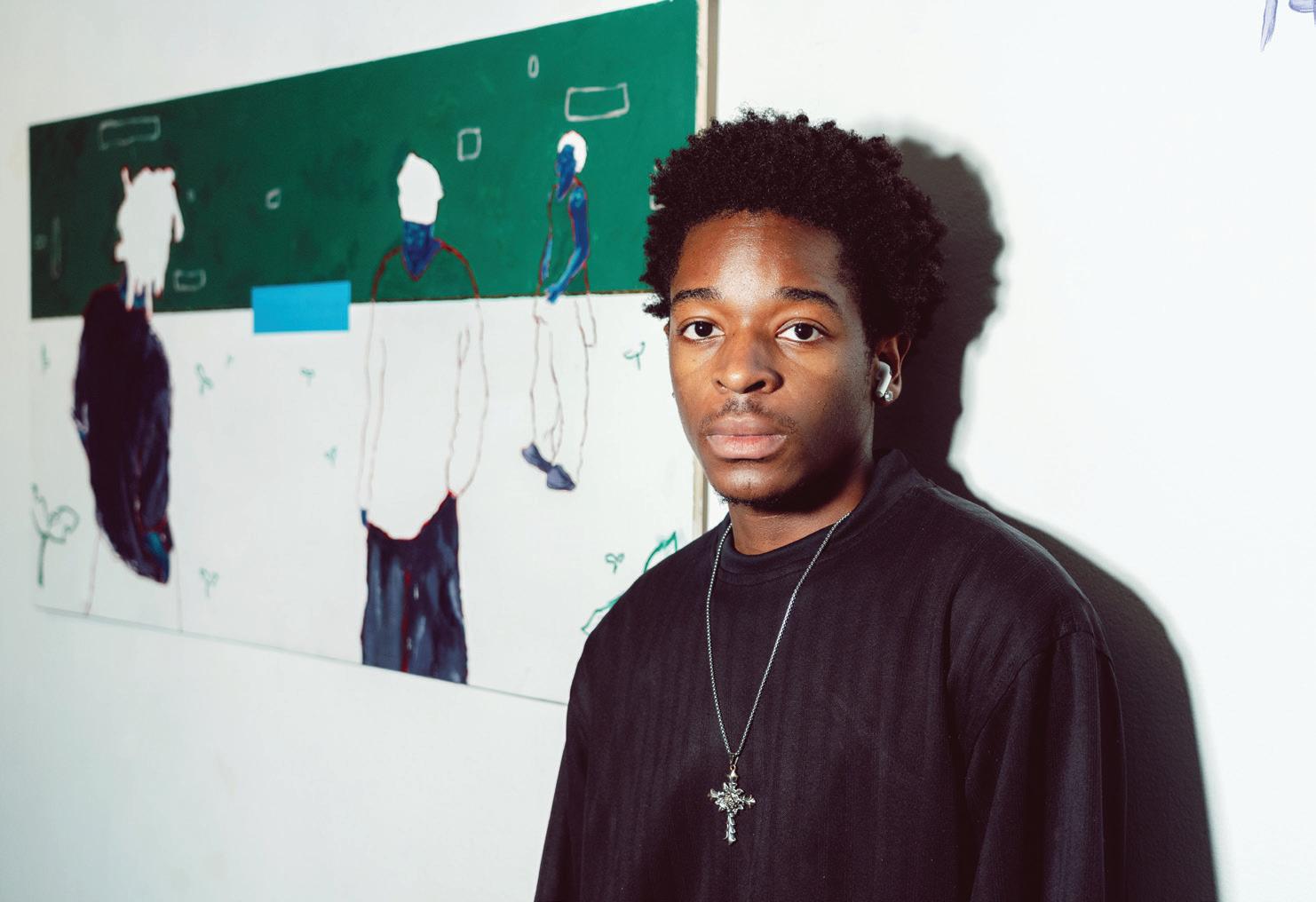
Quote of the week
“If you are really interested in the tenets of responsibility, you can’t put on a lens. It’s not black or white, it’s human."
— L. DougL as WiLDer
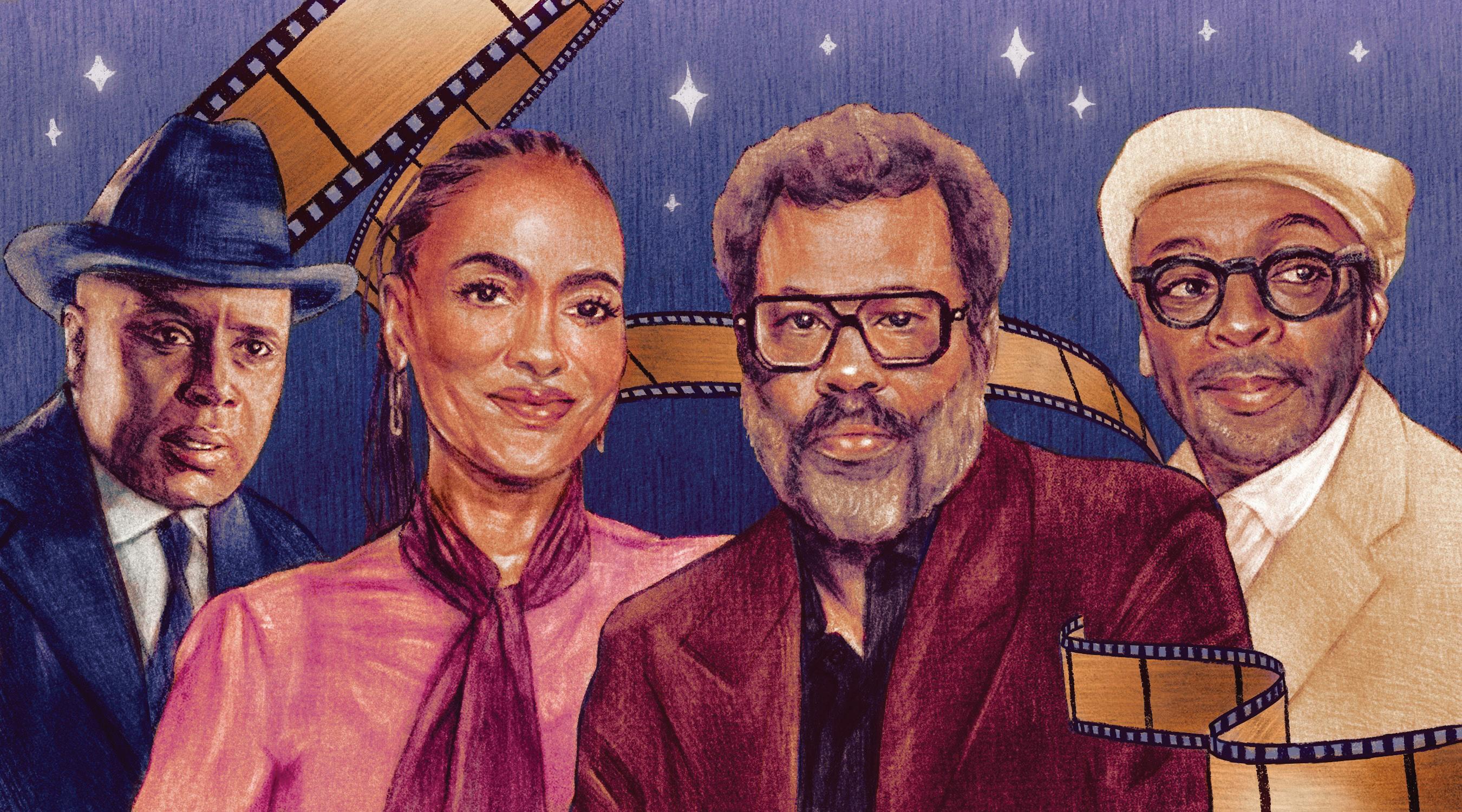
ARRICK WILSON PHOTO EDITOR
Black film is more than a movie made by a Black person; it’s the stories, themes, cultural relevance and messages that resonate with Black audiences.
Oscar Micheaux, born in 1884, was one of the first Black filmmakers and producers in film history. I’m guessing you didn’t know that, did you? Amassing over 44 films, he was a pioneer for his time, creating films that targeted racism in the early 20th century.
I brought up Micheaux to explain the little-known influence that has birthed many Black filmmakers. Spike Lee, a twotime Oscar award winner and pioneer once called Micheaux his “idol,” stating that Micheaux inspired him to shoot his first project, according to IndieWire.
Black film matters just because of this. Black filmmakers are influenced by others, creating and giving the proper representation needed to tell Black stories.
Proper representation is essential in Black stories, as only we can tell our own. While yes, others can write Black films and characters, no one can do it like us. There is a sense of authenticity in Black films, which in turn resonates with Black viewers.
Think of Spike Lee’s 1989 release, “Do The Right Thing.” The film is a social
commentary on racial stereotypes and the social structure of America.
Lee establishes the modern reality of America’s melting pot of diversity filled with conflict in the film, eerily mirroring the happenings of life today. This film matters because it has continued to show America a mirror of itself. With it being created by a Black man, the film demonstrates the conditions of a Black person in the United States.
Black film is a story of culture, a retelling of a journey and an honoring of the past as well as the future.
Speaking of the past, many Black filmmakers make historical films based on different time periods in United States history, as the themes provide historical context for the future. Filmmaker and director Ava DuVernay frequently makes films meant as a representation of the past. As a director of the 2017 film “Selma,” DuVernay showed a snapshot of the civil rights march from Selma to Montgomery, Alabama, in 1965.
DuVernay additionally directed “When They See Us,” the 2019 television series on the false arrests of the Central Park Five in New York. Both of these films are period pieces that document and showcase the happenings of racism and the fight for equal rights in the Black community.
These two sensitive pieces are made to make the viewer realize the horrors and
problems that racism has done. Films like these two are done purposely to enact change for the future by telling the past.
Jordan Peele changed my life with his directorial debut release of “Get Out” in 2017. Peele often utilizes Afro-surrealism in his work, which was first introduced to me in this film. Afro-surrealism is where “strangeness and blackness” meet and co-exist together, according to an article by The Guardian.
Peele uses Afro-surrealism in “Get Out” by creating this hypnotizing, mythical space called the “sunken place” that is used to put white brains into Black bodies. The film is an allegory for racism still being alive in America, being carried by conditioned oppression and dehumanization of the Black community.
I think this is what Black film does best: creating a story that is used to become an allegory for life in America. Afrosurrealism carries this story by utilizing its “strangeness” to tell the utmost truth.
Though the genre of Black film can be seen as a monolith, filmmakers showcase Blackness through a plethora of topics. For example, Barry Jenkins’ 2016 film “Moonlight” speaks on Black masculinity, tackling the topic of sexuality in Black America.
Gina Prince-Bythewood’s 2000 film “Love & Basketball” showcases Black love in its lightest and darkest moments.
F. Gary Gray’s 1995 film “Friday” follows two friends navigating the day after one gets fired on his day off.
Whether it’s drama, historical fiction or even comedy, Black film reflects Black life. Black film, in all its forms, is essential. It’s powerful. It’s authentic. It’s Black. Black filmmakers create a path to reflect on their part in America by telling Black stories with authenticity and creativity.
I think this is what Black film does best: creating a story that is used to become an allegory for life in America.”
Black films showcase the good and bad, helping the world see our perspective — showcasing that Black life, in all its forms, is worthy of celebration.
Keep watching, keep celebrating and keep supporting Black cinema.
by Zoë Luis.

LAUREN PRATTIS
AUDIENCE EDITOR
In the time that has passed since the election in November, the anger I once held has turned into numbness. I don’t even know how I’m supposed to be feeling, especially in regards to what seems like a new executive order a day from the current presidential administration. One of the first executive orders that President Donald Trump unveiled was “to end government DEI programs and preferencing,” according to the White House website.
Diversity, Equity and Inclusion programs were intended to promote the fair and equal treatment of all; one of the alleged foundations of this democracy. I’m finding myself having a hard time looking for “valid” reasons for government agencies to get rid of those amazing programs and an even harder time wrapping my head around the fact that more people aren’t as outraged as I am. What is so scary about making sure that everyone, regardless of class, race, gender and everything in between, has a fair chance?
The more time I spend
thinking about it, the more I understand that the reversal of these “wasteful programs” is to maintain a power imbalance in this country. This administration is celebrating the fact the path to equity just got harder.
They make it seem like getting rid of DEI, which they call “shameful discrimination,” is an essential change to get the workforce back on the right path — one where straight white men remain in power and everyone else just has to accept it as the way things are.
The claims that these rollbacks are in order to level the playing field are simply untrue — they’re just digging a bigger hole on our side while piling more dirt onto theirs. It is going to be so much harder for me and others like me to dig ourselves out of this hole. All progress that was previously made is actively becoming unraveled.
Needless to say, I am disappointed, but not surprised, that this is how the president is choosing to spend his first few weeks in office. Throughout Trump’s 2024 presidential campaign, continuous promises
to put an end to illegal DEI in the name of “protecting civil rights” were made. Ironically, the current administration is doing the opposite of protecting civil rights. It is so obvious that all of this was never about fair and equal treatment — it is about maintaining the “status quo.”
The claims that these rollbacks are in order to level the playing field are simply untrue — they’re just digging a bigger hole on our side while piling more dirt onto theirs. It is going to be so much harder for me and others like me to dig ourselves out of this hole.”
It is crazy to me that dismantling DEI was one of the first things on the presidential to-do list instead of addressing the prevalent issues that this country is facing. For example, the president promised to “make America affordable again,” but my gas and grocery bills have remained the same.
I am a Black woman in the second half of my college education. I am in the process of applying for summer internships and jobs and I have my heart set on a law degree. Waking up every day to check the news makes everything I have worked so hard for seem pointless at times.
Right now, the future is so unclear, and I wonder if I’ll ever actually be able to make a difference. I don’t know what kind of world will be waiting for me when I walk across the stage with my diploma, and I have to admit that it is a scary feeling.
However, I know that I need to turn these feelings and fears into fuel for the future. I refuse to let them win.
Joke of the week
“The
advice I would give someone is to not take anyone’s advice.”
— eDDie Murphy
LAUREN PRATTIS
AUDIENCE EDITOR
NATALIE MCEWAN
OPINIONS EDITOR
The Commonwealth Times staff asked for relationship advice and Cupid is here to answer!
Dear Cupid,
Why is his butt bigger than mine?
Insecure and flat, Nevaeh
Dear reader,
A recent article published by a top scientific journal has revealed that alongside the bird flu, male Brazilian butt lifts are also on the rise.
This surgery has been popularized by countless celebrities, from the Kardashian family to Drake. My instincts are telling me that he got this procedure done to make you jealous — a good partner would never do that.
This is definitely a sign that this relationship’s foundation isn’t as strong as it should be. In my professional opinion, you should leave this relationship; it’s for your own good.
Don’t fret, dear reader! Ending a relationship is never easy, but you never know if your new love is right around the corner.
Love, Cupid
Dear Cupid, If a man likes my Instagram story is he in love with me?
Hopeless romantic, Zach
Dear reader,
Nothing makes my heart swoon like contemporary love. Since the dawn of time, I have seen mortals send each other coded messages to communicate their affections. Obviously this man is in love with you — what other reason would he have to like your Instagram story?
Of course, Instagram stories alone won’t progress this connection to the beautiful situationship it could become. Don’t just swipe up on his story — make a bold move! Go to his house and leave a box of

chocolates at his door, maybe even with a beautiful, poetic note written in cutout letters from magazines. That kind of initiative will bring this connection out of Instagram DM’s and into a blossoming romance.
Love, Cupid
Dear Cupid, There is a smaller, more well-shaven version of me at work who wants to steal my girlfriend. What should I do?
Threatened by a lesbian, Dylan
Dear reader,
There is only one way you can fix this and win your girlfriend’s affections — a duel. You might think me extreme for suggesting this, but I’ve been around for a while and this is the secret that makes ladies swoon. That is if you win, of course. Horse-jousting duels have fallen out of vogue for a while, but I have a new idea for our contemporary age. First, invite this scheming coworker to Monroe Park at the crack of dawn. There, you will both mount Spin scooters.
You also cannot use a sword. You
probably don’t even have one, and that is OK. We can get creative — use your giant Owala water bottles to try and knock each other down from the scooters. Practically every college student seems to have one these days.
Win the duel, win your girlfriend’s heart back and triumph over that coworker once and for all. Just don’t lose — that would be super embarrassing and your girlfriend would probably leave you. Good luck!
Love, Cupid
Dear Cupid, I think I have a stalker. If I find out he’s cute should I go for it? I already ate all the chocolates he left at my door.
Scared but intrigued,
Ellie
Dear reader,
What a classic love story — those are hard to come by these days. Now, it is all about mutual admiration and agreement.
Back in the day, leaving gifts on a crush’s doorstep was a major compliment and a sign of the utmost respect from a suitor. You are stuck in the mindset that this is “stalking,” but I come from
the school of thought that it’s just good old-fashioned courting.
Eating the chocolates is an invitation for the mystery man to return. To keep this good banter going, leave him a gift this time!
However, the fact that you don’t exactly know who left the chocolates for you makes this part difficult. If he left a note, read it again and again — something is bound to reveal his identity.
If that doesn’t work we need to think outside the box. We know he likes you and is bound to come back, so why not make sure he doesn’t leave until you know who he is?
This can be done in three easy steps. Step one, build a human-sized, crueltyfree rodent trap and make sure that it blends in seamlessly with its surroundings — we don’t want to raise any suspicion from the neighbors.
Step two, fill the “trap” with all sorts of Valentine’s Day goodies. The final step is to sit and wait. Soon enough, your true love will be revealed.
Best of luck to you and please write back with the results.
Love,
Cupid





By
Pepper & Zhouqin Burnikel
By Tom Pepper & Zhouqin Burnikel
Edited by Rich Norris and Joyce Nichols Lewis
Edited by Patti Varol
ski resort
Quick-with-a-joke types 104 Pickleball point starters 106 Swung up and down
Flip-flop, e.g.
Common blood type, briefly
Per person 116 Yoda’s power, with “the” 117 Prepare for takeoff?
118 Relishing every bite of a fluffy French dessert?
122 __ so slightly 123 “OK, we’re doing this!” 124 Turner of “Rivals” 125 Fuel fire suppressant 126 Darn, say 127 Seated twist, e.g.
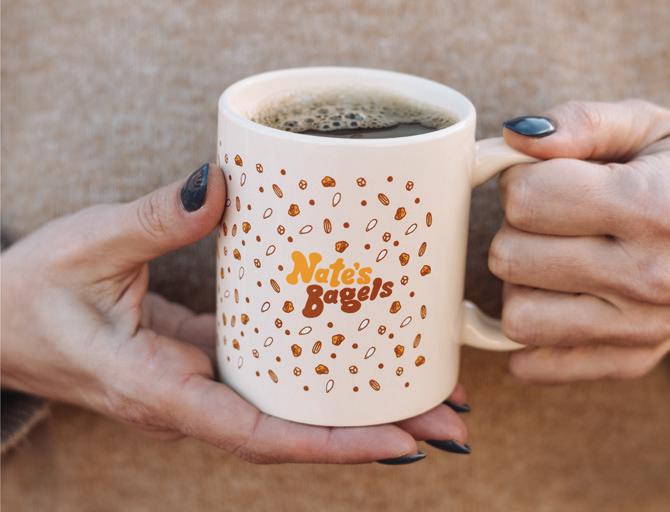
Edited by Patti Varol

